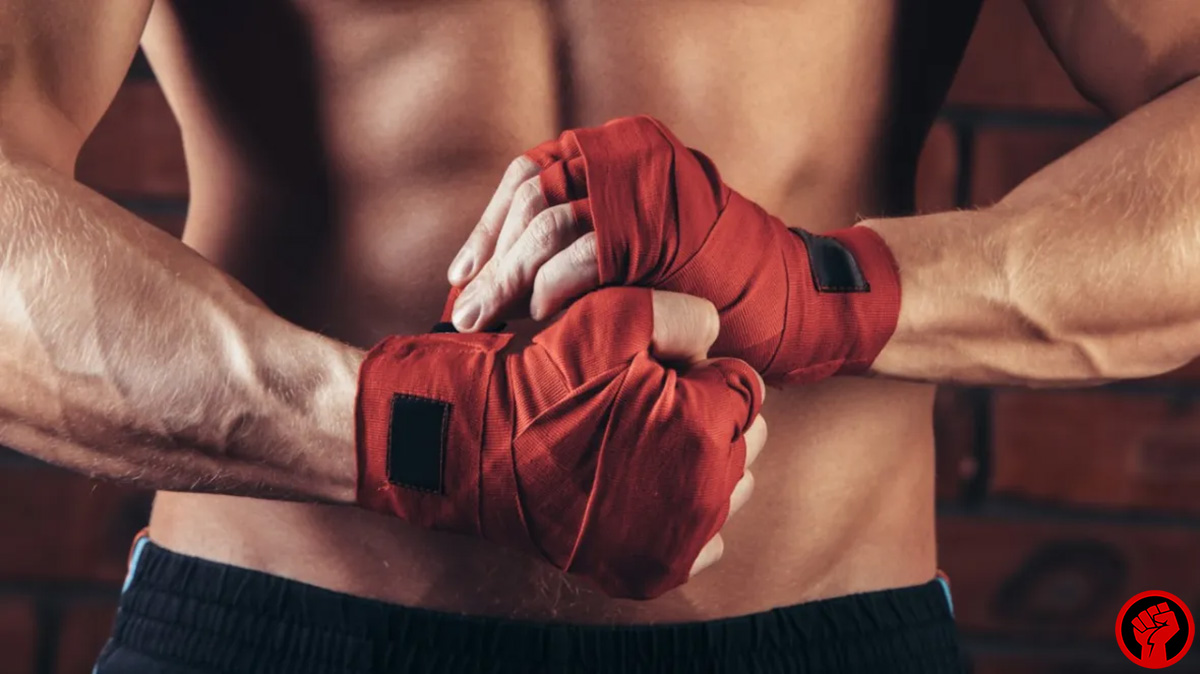Boxing is a physically demanding sport that requires strength, agility, and endurance. While it’s known for its numerous benefits, there’s a common question that lingers in the minds of many enthusiasts: Does boxing cause muscle loss? In this blog post, we’ll explore the relationship between boxing and muscle loss, shedding light on the benefits and risks associated with this intense sport.
Benefits and Risks of Boxing for Muscle Building
Like many others physical activities, boxing offers a ton of benefits when it comes to muscle building. It can significantly increase muscle mass, improve strength, and boost power. The rigorous training routines in boxing involve intense muscle engagement, leading to hypertrophy – the process of muscle growth.
However, alongside the benefit, there are always risks to consider.
Does Boxing Cause Muscle Loss?
Contrary to popular belief, boxing itself doesn’t cause muscle loss. Instead, it’s the combination of various factors like overtraining, lack of rest and not provide enough nutrition that lead to muscle loss.

Let’s delve into these factors in detail.
Factors Contributing to Muscle Loss
Inadequate Nutrition
Insufficient calorie intake or making poor nutritional choices after demanding boxing training sessions can leave your muscles lacking the essential nutrients they need for growth and repair.
When you don’t consume enough calories to match the demanded energy for training, your body might prioritize energy allocation for basic functions, potentially leaving insufficient resources for muscle recovery and growth. This can lead to suboptimal muscle development and even lead muscle loss in boxing training over time.
Moreover, making poor nutritional choices, such as opting for processed foods, sugary snacks, or neglecting essential macronutrients like protein and healthy fats, can hinder your muscles’ ability to recover and repair.
Proteins, in particular, supply the necessary amino acids vital for muscle tissue recovery and growth. Without these building blocks, your muscles may struggle to bounce back and becoming weaker over time.

Lack of Rest
Excessive boxing training, which involves intense physical workouts and repetitive movements, can place significant stress on your muscles. While challenge are essential for improving your skills and performance, it’s equally crucial to provide your muscles with the necessary time and resources to recover.
Failure to do so can result in a catabolic state, which is detrimental to muscle health and can lead to muscle breakdown. This is one of keys answer for the question: Does boxing cause muscle loss?
- Catabolic State: A catabolic state refers to a physiological condition in which your body is breaking down tissue, including muscle tissue, at a rate faster than it can repair or rebuild. This state is often associated with excessive physical stress and insufficient recovery time.
- Muscle Breakdown: During intense boxing training, your muscles experience micro-tears and damage due to the stress placed on them. These micro-injuries are a natural part of muscle adaptation and growth. However, without enough rest, your body may struggle to repair and rebuild the damaged muscle fibers, leading to a net loss of muscle tissue over time.
- Hormonal Imbalance: Excessive training without rest can disrupt the balance of hormones in your body. Elevated levels of stress hormones like cortisol, which are released in response to overtraining, can promote muscle breakdown while inhibiting muscle growth.
- Energy Depletion: Intense and prolonged training without sufficient rest can deplete your body’s energy reserves, including glycogen stores in muscles. When energy levels are low, your body may break down muscle tissue to provide a source of energy, further contributing to muscle loss.
- Reduced Performance: In a catabolic state, you may notice a decline in your physical performance, including decreased strength, endurance, and power. This can hinder your progress in boxing and make training less effective.

Overtraining
Overtraining in the context of boxing refers to pushing your body beyond its limits, often by training excessively without allowing sufficient time for rest and recovery. This relentless pursuit of training goals, while admirable, can have detrimental effects on your muscles.
Muscle fatigue is a natural consequence of intense physical activity, especially during boxing training, which involves a combination of cardiovascular exercises, strength training, and skill drills. However, when you overtraining and don’t provide your muscles with enough rest, this fatigue can become chronic and severe.
Here’s how overtraining can cause muscle loss in boxing:
- Exhaustion: Overtraining leads to a state of chronic exhaustion where your muscles are constantly fatigued. This means they don’t have the opportunity to recover fully between workouts.
- Increased Stress: The physical stress placed on your muscles during overtraining can lead to the release of stress hormones like cortisol. Elevated cortisol levels can promote muscle breakdown.
- Inflammation: Overtraining can trigger inflammation in your muscles, which can contribute to muscle fatigue and damage.
- Decreased Muscle Protein Synthesis: Overtraining can disrupt the process of muscle protein synthesis, which is essential for repairing and building muscle tissue. This disruption can lead to a net loss of muscle mass.

As a result of these factors, overtraining significantly increases the risk of muscle loss. Your muscles, instead of growing and becoming stronger, are constantly under stress and are unable to recover properly.
Ways for Boxing to Builds Muscle
Boxing is a dynamic sport that actively contributes to muscle building. Here’s how it happens:
Increased Muscle Mass
In boxing, the repetitive motions and resistance training play a pivotal role in stimulating muscle growth, primarily targeting key muscle groups in the upper body and core.
With a wide range of movements like punching, blocking, and weaving, boxing require the coordinated activation of various muscle groups, especially those in the upper body in a repetitive manners, which stimulates muscle fibers, prompting them to adapt and grow stronger over time.
Boxing also places a significant emphasis on core strength and stability. Your core muscles, including the abdominals, obliques, and lower back, are essential for generating power in punches, maintaining balance, and avoiding injury. The constant engagement of the core muscles during boxing training leads to increased muscle activation and growth in these areas.
Enhanced Strength
Boxing is a physically demanding sport that places a significant emphasis on strength, and it can be instrumental in helping individuals develop powerful muscles, particularly in the arms, shoulders, and chest.
- Boxing involves a multitude of punches, such as jabs, crosses, hooks, and uppercuts. Executing these punches with precision and power requires substantial arm strength. As boxers train to improve the force behind their punches, they naturally build strength in these arm muscles, resulting in greater power and endurance.
- Throwing punches involves the rotation of the shoulders and the activation of the deltoid muscles. Additionally, maintaining a stable guard position requires isometric contractions of the shoulder muscles.
- Throwing hooks and crosses engages the chest muscles, as these punches involve rotation of the upper body and the extension of the arms.
Improved Power
The explosive movements involved in boxing training, such as rapid punches and dynamic footwork, play a vital role in enhancing muscle power.
- Punching Power: Boxing requires the rapid generation of force in a short period, your muscles must contract explosively, especially those in your arms, shoulders, chest, and core. Over time, this routine make your body adapt and becoming more efficient at producing the power needed to propel your fist forward with speed and force.
- Footwork and Agility: The explosive pivots, shifts, and rapid directional changes engage leg muscles, including the calves, quads, hamstrings, and glutes. These dynamic lower body movements not only improve your ability to move swiftly and maintain balance in the ring but also contribute to overall leg strength and power.
- Core Engagement: Your core muscles, including the abdominals and obliques, are central to generating power and maintaining balance during punches and footwork. The twisting and rotational motions engaged during these movements strengthen the core, enhancing its ability to transfer power from the lower body to the upper body.
Preventing Muscle Loss While Boxing
To ensure that boxing doesn’t lead to muscle loss, follow these essential tips:
Maintain a Balanced Diet
To optimize muscle growth and ensure effective recovery after your boxing training sessions, it’s crucial to follow a well-rounded nutrition plan that encompasses a balanced intake of protein, carbohydrates, and healthy fats:
Protein
Considered the cornerstone of muscle health, protein provides the essential building blocks called amino acids, which are required for muscle tissue repair and growth. During intense boxing workouts, your muscles undergo micro-tears and damage, and protein is instrumental in repairing and rebuilding these muscle fibers.
Carbohydrates
Carbohydrates are your body’s primary source of energy. They fuel your workouts, providing the necessary power and endurance to perform at your best. Moreover, carbohydrates also replenish glycogen stores in your muscles and liver, which can become depleted during prolonged training sessions.
Ensuring an adequate intake of carbs helps sustain your energy levels and prevent muscle fatigue during and after training, aiding in faster recovery.
Healthy Fats
While protein and carbohydrates take the spotlight in supporting muscle growth and energy, healthy fats also play a crucial role.
They provide a sustained source of energy and help regulate various bodily functions, including hormone production. Healthy fats are essential for maintaining overall health and optimizing your body’s ability to utilize nutrients effectively.
Incorporating sources of healthy fats like avocados, nuts, and olive oil into your diet contributes to overall well-being, which indirectly benefits muscle recovery.
Prioritize Rest and Recovery
Providing your muscles with adequate time to repair and recover is essential for optimizing your training results and overall muscle health. This necessitates the incorporation of rest days into your regular training routine:
Muscle Repair and Growth
During intense boxing training, your muscles undergo stress and micro-tears. These microscopic injuries are a natural part of the muscle-building process. However, it’s during the recovery phase that your body repairs these tears, making the muscles stronger and more resilient.
Rest days offer this vital opportunity for the repair and growth of muscle tissue.
Prevention of Overtraining
Overtraining occurs when you push your body beyond its capacity for recovery. Without adequate rest, your muscles remain in a state of constant fatigue and stress. This can lead to diminishing returns in your training efforts, as your muscles become more prone to injury and less responsive to stimuli.
Incorporating rest days helps prevent overtraining, ensuring that you can continue training at an optimal intensity.
Reduction of Injury Risk
Continuous, strenuous training without rest increases the risk of overuse injuries. Muscles, tendons, and ligaments require time to heal and adapt to the stress they experience during boxing workouts.
Rest days allow your body to repair any minor injuries or strains, reducing the likelihood of more severe injuries that could sideline you for an extended period.

Mental and Emotional Recovery
Rest days also benefit your mental and emotional well-being. Boxing training can be mentally taxing, and the constant push for improvement can lead to burnout or mental fatigue.
Taking a break from training allows you to recharge mentally, reducing stress and anxiety associated with rigorous training routines.
Optimal Performance
Contrary to the belief that training every day leads to faster progress, it’s often during rest and recovery that significant gains are made. Well-rested muscles perform better, allowing you to train with greater intensity and focus when you return to your workouts. This, in turn, can lead to improved performance and faster progress over the long term.
Incorporating rest days into your training routine doesn’t mean you’re slacking off; it’s a strategic approach to ensure sustained progress and prevent setbacks.

Cross-Training
Integrating a diversified training regimen into your boxing routine, which includes exercises like weightlifting and yoga, offers several advantages that contribute to balanced muscle development and the prevention of overtraining.
Balanced Muscle Development
Boxing primarily emphasizes the muscles of the upper body, especially the arms, shoulders, and core. While this is crucial for boxing performance, it can lead to muscle imbalances if other muscle groups are neglected.
Weightlifting, on the other hand, allows you to target different muscle groups, including the legs, back, and lower body. By combining boxing with weightlifting, you ensure that all major muscle groups receive attention, promoting a more symmetrical and balanced physique.

Improved Strength and Conditioning
Weightlifting is an excellent way to build overall strength, including functional strength that can benefit your boxing performance. Enhanced strength in your legs, back, and core can translate to more powerful punches, improved footwork, and better overall endurance in the ring. By cross-training with weightlifting, you can complement your boxing skills with a solid foundation of strength.
Recovery and Stress Reduction
Yoga is a valuable addition to your training routine for several reasons. It promotes relaxation, reduces stress, and improves flexibility and balance. Additionally, it encourages deep breathing and mindfulness, which can aid in mental and emotional recovery. Since boxing can be mentally demanding, yoga provides a counterbalance by helping you unwind, destress, and rejuvenate both physically and mentally.
Variety and Motivation
Incorporating different forms of exercise adds variety to your training, preventing boredom and monotony. This variety can keep you motivated and engaged in your fitness journey. It also allows you to set new goals and challenges, further enhancing your overall progress and enthusiasm for training.
Conclusion
In conclusion, boxing itself doesn’t cause muscle loss; it’s the result of various factors, including inadequate nutrition and overtraining. When done correctly, boxing can be a fantastic way to build muscle, increase strength, and enhance power. To maximize the benefits while minimizing the risks, focus on a well-rounded approach that includes proper nutrition, adequate rest, and cross-training. So, put on those gloves and enjoy the muscle-building journey in the boxing ring!

